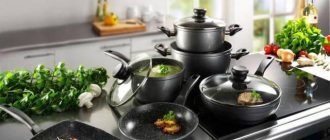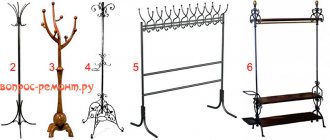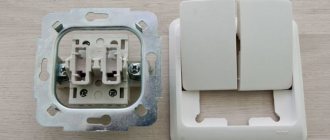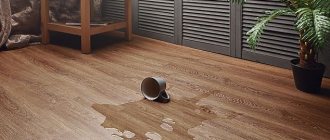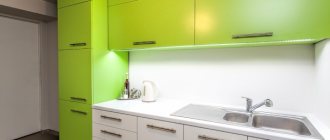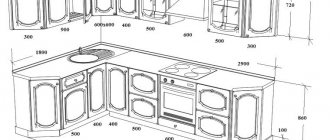Sewerage is a complex system consisting of links. One link is a siphon for a sink with an overflow. Its function is difficult to overestimate. The siphon drains wastewater into the sewer system and at the same time creates a water seal for unpleasant “odors.” Drain installation is carried out on almost all plumbing fixtures. When a major overhaul is carried out, which involves changing plumbing fixtures, the siphon must also be replaced with a new one.
How does overflow occur?
The situation when the sink is filled with water above the required level often happens. This happens for various reasons:
- The drain hole was previously closed by the owner, but something distracted her, and the sink completely filled with water.
- The inlet to the drain pipe is clogged or accidentally blocked.
Then the liquid level approaches the overflow hole. A sink with an overflow drains excess liquid first into a siphon and then into the sewer. Excess liquid will drain through the sink overflow hole, provided that the siphon is not clogged and is functioning. The flood will be avoided.
Characteristics of different types of siphons
Manufacturers offer three types of siphons for installation under washbasins and sinks:
- pipe drain;
- bottle design;
- corrugated model.
Bottle drain
The appearance of the siphon sump resembles a flask. There are two tubes. The first goes to the additional drain hole on the side of the sink, the second to the sewer pipes. A sink siphon with a bottle-style overflow is suitable for the bathroom and kitchen. The advantage of this type is proven by the following factors:
- there is no need to remove the entire siphon to clean the hydraulic valve;
- It is possible to install an additional pipe. Additional sewerage consumers will be connected through it;
- If a valuable item accidentally falls into the drain hole, then there is a chance that it will be found in the sump. It is enough to spin the flask;
But we must not forget the negative aspects of installing a bottle product:
- there is a high probability of leakage due to the design with a large number of connecting points.
Corrugated drain
A siphon with an overflow for a corrugated sink is the simplest option. The corrugated plastic pipe is bent into the desired shape, the position is fixed with clamps. A bend must be created to create a water plug. The advantages of the model are obvious:
- the number of connections is kept to a minimum, which significantly reduces the likelihood of leaks;
- Connection and installation work is easy to do yourself;
- The siphon does not require much space.
Siphons for sinks, siphons for sinks
Siphons for sinks and sinks are special sanitary devices that help drain waste water from a sink, sink, bathtub, shower tray, etc., further into the sewer system. At the same time, the sink siphon should not allow unpleasant odors and gases to pass through from the sewer system, ensure rapid drainage of waste water, and be easy to maintain and clean if necessary.
Siphons are most often made of plastic, as well as galvanized metals, stainless steel and combinations thereof. Thanks to this, an acceptable appearance and long service life of the siphon are achieved. Ceramic siphons are sometimes found, but these are no longer common. Most often, siphons have a “bottle” design - the siphon body has a neck and a special water seal, which prevents the spread of odor from the sewer. The principle of the water seal is as follows - it is a curved structure with a separate internal cavity, which is completely filled with liquid, which isolates the gas environment, but easily allows liquid to flow, which is what prevents the spread of odors and gases. The simplest water seal is a pipe in the shape of the letter S or U. Dry seals and check valves are also used to isolate odors. The bottle siphon has a more complex shape, it resembles a bottle - in connection with this it received the name “bottle siphon”. Also, the body of the siphon for the sink can have a different shape, have a short length - for ease of installation, etc. The siphon drain has standard dimensions of 63 mm, 72 mm, and for kitchens also 115 mm. The siphon outlet can be corrugated, for easy connection to sewer pipes of standard diameters (50 mm, 40 mm, less often 32 mm), or a threaded outlet with a clamping nut, also in standard sizes 1 1/4″, 1 1/2″, 2 ", 1". In total, siphons can be divided into three types:
- pipe siphons for sinks;
- bottle siphons for sinks and sinks;
- corrugated siphons that are suitable for any sink and sink;
Pipe siphons are devices with simple water seals made from rigid S- and U-shaped pipes. They are relatively simple in design, can be inexpensive, but also have disadvantages - they are difficult to disassemble and clean, and as a rule, their connection to the sewer requires clear orientation and accuracy. Corrugated siphons for sinks are made of corrugated plastic pipe, which can be positioned in a way that is convenient for installing a sink or sink. The advantages include extreme low cost and relative ease of installation. The disadvantages are that they are difficult to clean and cannot be taken apart. Bottle siphons are the most widely used, as they meet most of the requirements for siphons.
Features of sink siphons.
As a rule, siphons for sinks are not equipped with an overflow, since the design of a porcelain sink has an already installed overflow, which is discharged into the drainage cavity. Because of this, they have a siphon drain mount of a more elongated design than siphons for kitchen sinks. Also, drainage structures for bathrooms can have additional inlets for a washing machine or dishwasher (usually this is a “spout” leading into the inlet drain pipe of a siphon with a diameter of 18 mm, or a thread for a 3/4 nut).
Features of a siphon for kitchen washing.
Siphons for kitchen sinks have the same design as for sinks, with the difference that their drain fastening is shorter, since kitchen sinks are often made of stainless steel, which is small in thickness. The diameter of the drain hole can be 115 mm; there are also siphons for 2 sinks. Sometimes a special grinder is built into the kitchen siphon for grinding food residues and other things to avoid sewer blockages. Very often, sink siphons are equipped with an additional overflow, since the kitchen sink does not have one built-in.
You can choose and buy any siphon for sinks and sinks online on our website. We have a wide variety of accessories for modern sanitary ware in the bathroom and kitchen that meet all the requirements for manufacturability, quality and service life.
#sink siphon #sink siphon #sink siphon #sink siphon #kitchen siphon #kitchen siphon #overflow siphon bath siphon with overflow
Overflow problems
An additional pipe for draining water from the sink, which is connected to a siphon, eliminates excess water when the sink is overfilled - this is the sink overflow. The amount of liquid is reduced from the sink in this way, unless it is through the drain hole.
The overflow drain for the sink was invented not so long ago. Modern models on the Russian market are a sink siphon with an overflow. Allows you not to worry about the possibility of flooding your own apartment or house and your neighbors.
Two main parts of the design make up the washbasin overflow drain:
- the siphon itself with a water stopper;
- a drain pipe. It is made of corrugation or can be rigid. It redirects waste liquid to the sewer system
What is a siphon, where is it used and what is it used for?
A siphon is a sump located under the sink through which water is drained into the sewer. Such devices are also installed under the bathtub. They create a water plug that prevents unpleasant odors from entering the room and trap large debris, preventing the sewer pipe from clogging. After all, unscrewing the plug and cleaning the siphon in an apartment is much easier than breaking through a blockage in the riser.
All connections of plastic sink siphons are tightened by hand, without the use of tools.
Principle of overflow selection
- The device is, first of all, selected based on the material. Siphons are available on the market in metal and plastic.
The plastic model for a bathroom sink with an overflow is the most popular among the rest. This is explained by its strength, resistance to corrosion, ease of installation, and affordability.
Products made of cast iron or an alloy of bronze and brass are more difficult to install and are more expensive.
- When making a purchase, you need to make sure that you have a tube for a spare drain.
A valve is installed for a sink without an overflow so that excess liquid does not pour into the hole if a regular siphon is mounted on the sink. An automatic bottom valve for a sink can save you from a flood. If the washbasin or sink is too full of water, it is triggered and a small passage appears into the drain hole, where the liquid goes.
- The choice of drain appearance will depend on the installation location.
Installation of a structure with overflow
It is necessary to inspect all spare parts for integrity before installing a siphon for a sink with overflow. Despite their diversity, the equipment of all is the same. For example, a plastic hydraulic valve consists of the following elements:
- product body;
- exhaust pipe;
- traffic jams;
- rubber gaskets;
- with a thread with a diameter of 32 mm, a plastic nut;
- a screw that tightens the structure into a single whole;
- drain cover with grate;
- overflow tube.
Rubber for gaskets is used with a thickness of at least 5 mm. If the diameter of the outlet is less than 50 mm, then an adapter for the sewerage system is purchased.
Algorithm for installing a drainage system with overflow
The drainage system has installation instructions. This allows you to complete the installation without requiring the help of a specialist.
- Check the correct placement of the grid on the drain hole. Correct position: the mesh is slightly recessed into the drain hole compared to the surface of the sink. Otherwise, its high position will not allow the liquid to go down the drain until the last drop.
- The old device is dismantled. A container for draining water will come in handy.
- A screw is unscrewed in the center of the drain hole.
- The old product is removed. The sewer pipe is temporarily closed with a valve to prevent odors from entering the room.
- Between the grate on the drain and the outlet pipe, which is located under the sink, you must insert a gasket lubricated with silicone sealant. A cuff is required for the pipe. Everything is tightened with a screw.
- A nut and a cone-shaped gasket are threaded onto one end of the pipe.
- The pipe inserted into the siphon is tightened with a nut. Work is carried out without the use of keys. Using force may strip the threads.
- A plug is placed on the additional drain if no additional consumers are connected.
- A pipe is connected that connects the entire structure to the sewer system. First, a rag is pulled from the sewer pipe.
- The cuff is lubricated with sealant before installation in the sewer. An outlet pipe is inserted into it. The assembly with the sewer must be rigid.
Assembly and installation on the sink
The most common type of drain plumbing fittings are products with bottle designs. Despite the fact that they are somewhat more difficult to assemble than other types of products, they provide an optimal set of consumer characteristics. Therefore, let's look at how to assemble a sink siphon, complemented by an overflow function, based on a regular plastic bottle model. Installation will be easier if you initially completely screw together all the elements, thoroughly compress the threads and carefully position the gaskets, and then connect the finished product to the outlet and overflow holes of the sink.
Assembling a siphon for a sink, complemented by an overflow function
- We twist the two lower parts of the flask through a large flat gasket. The threaded cap (cup) is tightened until it stops, while you need to control the position of the gasket, preventing it from distorting.
- An intermediate pipe is inserted into the upper hole of the flask, which can be without an outlet or, if you have a siphon for a washing machine with or without a check valve, have an additional outlet to which a herringbone fitting is attached with a union nut through a flat gasket-valve. Union nuts must first be put on the upper and lower parts of the intermediate pipe, and then conical gaskets with the sharp parts facing outwards.
- We tighten the flask with the lower nut, and the overflow unit with the upper one.
- We insert and tighten the outlet pipe with a union nut and a cone gasket into the larger side hole of the flask, similar to the intermediate pipe. The outlet can be a straight or angled tube, or a corrugated hose.
- The same connection diagram is for the overflow tube, which must be connected at the lower end to the side outlet of the overflow tee, and at the top to the overflow pipe.
- Now you can attach the assembled structure to the outlet and overflow holes of the sink. The siphon for the kitchen sink is attached with screws to the corresponding holes through decorative grilles. For some models of plumbing fixtures, a decorative grille is provided only at the outlet hole, and the overflow is mounted by screwing a screw into the body of the overflow pipe through the wall of the sink. Regardless of the fastening features, flat elastic gaskets must be inserted from the side of the drain fittings.
All that remains is to connect the sink siphon with overflow to the sewer outlet. If the diameter of its outlet corresponds to the mounting diameter of the outlet, then it is simply tightly inserted through the o-ring into the sewer socket. To facilitate the operation and increase the reliability of the connection, silicone lubricants or sealants are used. If the outlet is thinner, then adapters or rubber cuffs with holes of suitable diameter are used.
Important! It is better to purchase the entire set of plumbing fixtures, including a siphon for a sink with overflow, at one retail outlet, so that unforeseen difficulties do not arise during installation of the equipment. This recommendation especially applies to products of non-standard designs and shapes.
Preventive measures
Unforeseen breakdowns can be avoided by following the recommendations for installation and further preventive maintenance of the drain system:
- The purchase and installation of a drain with overflow will be beneficial if all parts are without visible damage and the threaded connections work efficiently.
- The sealing of the structure will improve if you use silicone sealant. It will also protect rubber gaskets from early wear.
- The drain system is cleaned manually at the first sign of blockage. For prevention, special means are used to clean the drain system, taking into account the material of construction. A proven remedy for clearing clogs is using a plunger.
- If possible, corrugated pipes are replaced with smooth-walled ones, which will allow less dirt to accumulate and there will be no need for frequent cleaning.

